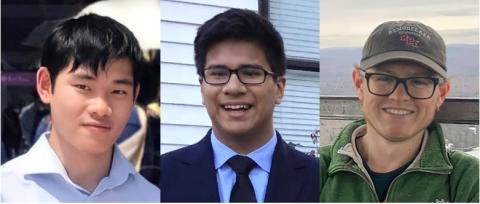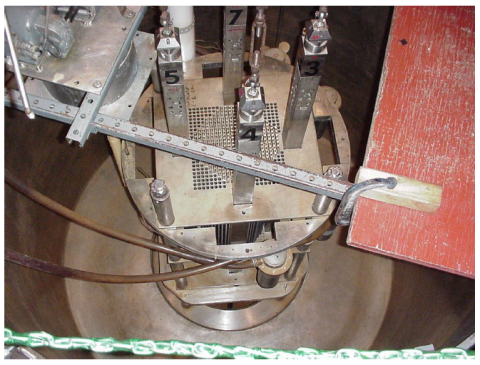The group is focusing on modeling the RCF in a 3-dimensional world. The goal is to have the major parts of the facility 3D-modeled with corresponding technical schematics of every part also drawn. The goal is also to have these parts put together with one another so as to have the entire RCF fully assembled and virtual reality ready. This 3D-modeled facility must be true in size compared to the real RCF, and should be assembled and modeled nearly exactly to the real RCF. The second half of this project is to program the reactor such that while in the virtual reality world, the reactor can be operated and used to obtain results similar to if the student was operating the reactor in a real-life setting. Ultimately, the true experimental results could be overlaid on the virtualized physical systems allowing students to experience things that cannot be seen in reality such as neutron fields and power evolution.
Team: Korn-Aticha Cherdchoo, Jose Deantes, Cody Truk
Project Advisor: Professor Wei Ji

Members of the design group
Project Motivation
The Walthousen Reactor Critical Facility, owned and operated by RPI, had been a staple in RPI’s nuclear engineering program since 1963. This facility, also known as the Reactor Critical Facility (RCF), is a low-power light water reactor whose sole-purpose was initially for research into portable reactor plants. RPI had used this reactor for its Nuclear Engineering program as one of the required courses named Critical Reactor Laboratory (MANE-4440). Students would gain hands-on experience working with a nuclear reactor, making it one of the most unique nuclear engineering classes in the country. However, in the past few years, backlash from private companies and the city of Schenectady, along with the introduction of RPI’s LINAC Laboratory have caused the school to stop operating the reactor as well as stop offering the class using the reactor. For these reasons, it is essential to maintain the legacy of this 60-year-old reactor after the reactor shutdown. One way to keep this reactor alive amid modern world technology is to transfer the reactor facility from its real, full-scale self, into a full-scale virtual environment. In other words, the facility will be brought into virtual reality.

Figure 1- The Real RCF.
Project Description
The group is focusing on modeling the RCF in a 3-dimensional world. The goal is to have the major parts of the facility 3D-modeled with corresponding technical schematics of every part also drawn. The goal is also to have these parts put together with one another so as to have the entire RCF fully assembled and virtual reality ready. This 3D-modeled facility must be true in size compared to the real RCF, and should be assembled and modeled nearly exactly to the real RCF. The second half of this project is to program the reactor such that while in the virtual reality world, the reactor can be operated and used to obtain results similar to if the student was operating the reactor in a real-life setting. Ultimately, the true experimental results could be overlaid on the virtualized physical systems allowing students to experience things that cannot be seen in reality such as neutron fields and power evolution.

Figure 2 – The RCF Model in (a) MCNP (b) NX (c) Blender (d) Unity.
Results and Accomplishments
All major parts of the reactor were dimensioned out using the Python and MCNP files. Each member then used NX to model each of the parts and create a technical drawing of them for future referencing. Upon finishing all the model parts, a pseudo assembly was created in NX to have a full-scale reactor reference and actually see how the reactor looks like in 3D. The NX model of all reactor parts was exported as an STL file, which can be imported to Blender. After creating all the model parts in Blender, the files were then put into Unity as assets. Once the model was successfully made in Unity, the RCF facility was ready for Virtual Reality. The development of the RCF model through several software is shown in Figure 2. Eventually, the result of this project allows the users to experience and explore the RCF facility in a VR environment. Users are also able to move fuel pins and control rods in and out along the line and learn about each basic part of the nuclear reactor.